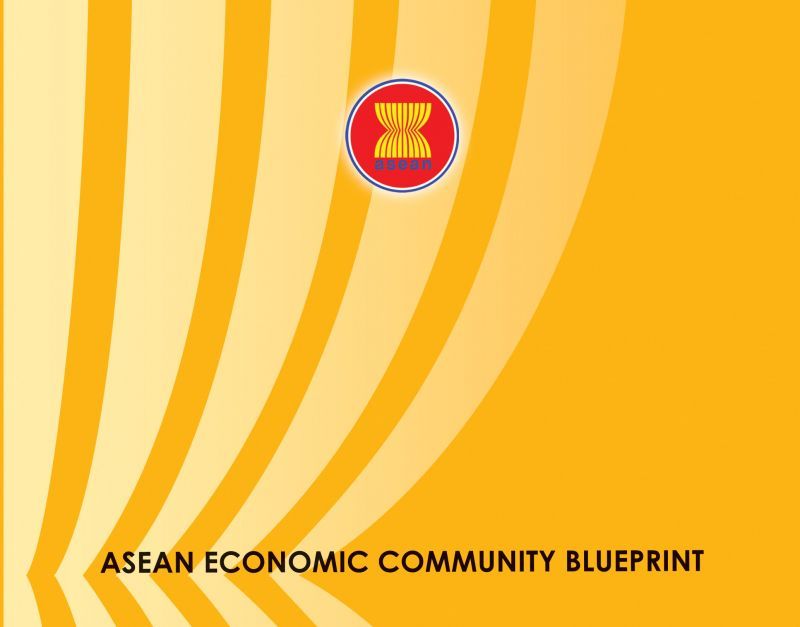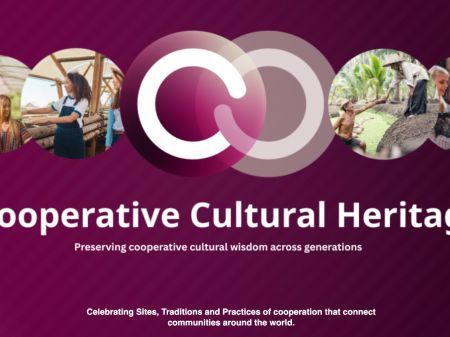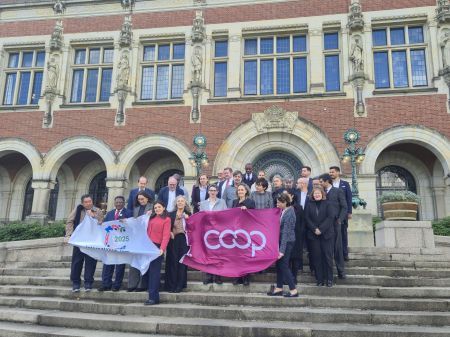
By Drs. Robby Tulus and Balu Iyer[1]
A quick glance on ASEAN
The Association of Southeast Asian Nations (ASEAN) is a regional grouping that was started in 1967 at the height of the Vietnam War, and with only five member countries: Indonesia, Malaysia, the Philippines, Singapore and Thailand. Its original formation was aimed at protecting the five countries against the threat of the political and economic instability during the cold war era. With the end of the cold war, ASEAN moved on to enhance economic development and bring all countries in a strong co-operative framework. Brunei Darussalam joined in 1984, followed by Vietnam in 1995, Lao PDR and Myanmar in 1997, and finally Cambodia in 1999, bringing the total to 10 member countries.
The ASEAN set for itself an ambitious economic agenda called the ASEAN Community by December 31, 2015. The ASEAN Community has three pillars as stipulated in the Bali Concord II: (1) Political and security community, (2) Social-cultural community, and (3) Economic community. Each Pillar has a blueprint for the realization of the ASEAN Community. The ASEAN Political-Security Community (APSC) is designed to address threats to regional security and political stability and to promote democracy and human rights in the region. The expressed goal of the ASEAN Social Cultural Community (ASCC) blueprint is to build “people-centered”, socially responsible, and environmentally friendly ASEAN. It lays down specific actions to be undertaken in education, social protection, environmental sustainability, engaging with civil society, and building an ASEAN identity.
The ASEAN Economic Community (AEC) reflects the ASEAN’s strong commitment to deepen as well as broaden economic integration. The AEC blueprint outlines the four pillars of the AEC that will be achieved through liberalization of trade in goods, services, and investments: (a) a single market and production base, (b) a highly competitive region, (c) a region of equitable development, and (d) a region fully integrated into the global economy.
Co-operatives misrepresented in the ASEAN Blueprint.
The ASEAN Economic Community Blueprint is an important document, and has to be taken seriously not only be by the ASEAN states but also by businesses and by not-for-profit organizations worldwide. To be inclusive and engaging, the AEC Blueprint needs to be understood by ASEAN citizens and community as well as business institutions alike. However, for this to happen, there needs to be serious efforts to be inclusive and engaging. In fact, most of the ASEAN citizens are not aware of what the ASEAN is trying to do in the integration process. The ASEAN Secretariat, located in Jakarta, ought to be the agency responsible to promote the AEC Blueprint to the public.
What is striking is the fact that the co-operative sector is so lightly represented in the AEC Blueprint document. The document seems to have misrepresented the co-operative sector by mentioning only Agricultural Co-operatives. Point 40 in the document states: “Promote ASEAN agricultural cooperatives as a means to empower and enhance market of agricultural products, to build a network mechanism linking agricultural cooperatives, and to fulfill the purpose of agricultural cooperatives for the benefit of farmers in the region”.
There are 60 million co-operatives members in the ASEAN region out of a total of 640 million. This is quite significant. After all, co-operatives in Malaysia (Bank Kerjasama Rakyat), Singapore (NTUC Fairprice and NTUC Income), Indonesia (Semen Gresik), Vietnam (Saigon Co-operative) are among the 300 largest co-operatives globally. Co-operatives are composed of different sectors such as consumers, workers, financial (savings & loans, insurance, and banks), women, fisheries, health, schools, universities, etc., all of which are very active in the ASEAN Region above and beyond the Agricultural ones. It is thus incumbent upon the ASEAN authorities, represented by the ASEAN Secretariat in Jakarta, to work with National Co-operative apexes (or federations) in the Region, including the ASEAN Co-operative Organization (ACO). Admittedly, ACO is still a young organization as compared to the ICA, although ACO has recently been very active in promoting inter-cooperative networks and business linkages in the region. For an ASEAN vision that proclaims to sustain economic growth for poverty eradication, address the development divide and accelerate regional integration in an open, outward-looking, inclusive and equitable manner, limiting cooperatives to one-sector alone is ostensibly a distorted view.
Why Co-operatives would benefit ASEAN’s development
One must admit that in many of the ASEAN countries, the growth of cooperatives mirrors the actual needs of the country. It is reflective of the nation’s economic growth where there has been an increase in the number of cooperatives alongside the increase in the national GDP per capita. The early co-operatives were an important socio-economic mechanism where the combined capital and capabilities from individuals of similar interest from diverse backgrounds helped individuals to uplift their living standards.
The birth of Singapore’s early co-operatives (co-op) was sparked in the 1920s in response to helping people when there was a lack of financial institutions for the common man. With no banks or finance companies to turn to for financial help, people had little choice but to turn to profiteering moneylenders. 90 years on, credit co-ops continue to champion its social mission, members helping members save for their future needs and providing unsecured loans with affordable interest rates. Today, co-ops provide a wide range of services from thrift and loan, childcare, eldercare, security to healthcare and employment services, benefitting not only members but also the larger community. As Singapore faces an ageing population, the Co-op Movement saw the formation of new co-ops to help improve quality of life for seniors.
In Malaysia, as in other ASEAN countries, co-operatives have gained increased recognition as a third economic sector. It is a unique blend of the two other sectors, namely the public sector that emphasizes on the social welfare of the community, as well as the private sector, which focuses on profit maximization. The 2011-2020 National Cooperative Policy (NCP) launched by Prime Minister Datuk Seri Najib Tun Razak in Malaysia attests the government’s recognition for the cooperative movement’s role in economic development. It recognizes the cooperative sector as one of three contributors to the country’s economy with a target income of RM50 billion by 2020. The NCP charts the direction for cooperative development without compromising the values and philosophies of cooperative, i.e. transparency, trustworthiness and honesty.
In the same manner co-operatives in Thailand, the Philippines and Indonesia are consolidating well to correct the negative public perception that it too closely associated with state run businesses, and to enhance their quality socio-economic performance by fixing shortcomings such as the scarcity of quantitative data, limited upstream policy advocacy, lack of standardization, the drive towards the Green Economy.
Credit Unions in most ASEAN countries are also actively engaged in financial literacy and financial inclusion programs, stressing on the importance of savings and at the same time ameliorating rural and urban credit needs. Education is considered a vital part of the credit union tradition, promoting the habit of thrift and educating members how to use credit wisely. National credit union federations of ASEAN countries are working together under the auspices of the Asian Confederation of Credit Unions (ACCU). ACCU’S mission is to make credit unions more relevant community-based financial institutions. Its regular membership is composed of 4 ASEAN countries, i.e. Indonesia, Philippines, Thailand and Vietnam, whereas affiliate members include Cambodia, Malaysia, Myanmar, and Singapore. Only Laos and Brunei in the ASEAN region are not yet members of ACCU.
In a recent Regional Consultation held in Jakarta for high-ranking government officials in charge of co-operatives, as well as co-operative leaders from ASEAN (++) countries, the need to provide better social protection was discussed at length. It is important for co-operatives as an institution in the formal economy to help transform what are often marginal survival activities ("informal economy") into legally protected work. In that way marginalized people in the informal economy could be fully integrated into mainstream economic life by providing them with decent work. The region’s 14 million migrant workers face difficult working conditions with little social protection. Job insecurity could thus be worsened by economic integration despite the promised increase of job opportunities for low/ semi-skilled workers. The Regional Consultation also addressed the issue of food sovereignty in ASEAN countries, where the availability of safe and nutritious food for a healthy lifestyle is no longer sufficient because we need to know more about where, how, by and for whom food was actually produced. Access to food and services by the poor must take precedence because food availability must be based on domestic production, and staple food supply and prices must remain stable. The Green Economy was discussed at length inasmuch as engaging co-operatives in renewables and waste recycling could be a promising business proposition, hence reducing environmental risks and ecological scarcities. The concept of “Circular Economy” introduced by China-Coop was well received by delegates from ASEAN countries. The Consultation was ensued by an exposure to the National Exhibition of Small and Medium enterprises of Indonesia, showing ASEAN (++) participants the exquisite work of Indonesian artists and artisans, displaying magnificent artwork and handicrafts from all over the country.
European Union, the International Labor Organization and the United Nations: ASEAN to follow?
The ASEAN is often touted as the Southeast version of the European Union (EU). While the EU and the ASEAN both have diverse member-states and core-states, the diversity of ASEAN economies and their varying levels of openness present a unique challenge in achieving regional economic integration under the AEC. There is need for ASEAN to recognize the multiplicity of actors and take the EU example in the way private sector is defined. According to the Communication of the European Union: private sector activity can take many forms and will impact on economic development in various ways. The private sector is highly diverse, ranging from enterprising individuals to large multinational corporations and financial institutions; from enterprises creating shareholder value to people-centered social businesses, cooperatives and workers and employers’ organizations. They may operate at a local, national, regional or international level, in rural or urban areas, in the formal or informal sector and in very different country contexts. Each of these private sector actors requires different conditions and incentives to contribute to development, entailing differentiated approaches to their support and engagement for development.
The International Labour Organization in June 2015 adopted a new international labour standard that is expected to help hundreds of millions of workers and economic units move out of informality and into the formal economy. Cooperatives are mentioned in this Recommendation as part itself of the transition, both in terms of enterprises & in terms of employment. Cooperatives are also mentioned in the legal and policy frameworks sections, by stressing that an integrated policy framework for the transition to the formal economy should include the promotion of entrepreneurship and of different types of business models, including cooperatives and other social and solidarity economy units.
The United Nations 2030 Agenda that includes 17 Sustainable Development Goals approved by all governments including ASEAN in September 2015 recognizes the diversity of business models, including co-operatives: "We acknowledge the role of the diverse private sector, ranging from micro-enterprises to cooperatives to multinationals, and that of civil society organizations and philanthropic organizations in the implementation of the new Agenda."
A combination of measures is needed, and co-operatives as a people-centered enterprise could play an important role in this regard. On the one hand, co-operative as could help increase incentives for the formalization of those still living in the margins of society, by providing appropriate legal support, securing property rights (especially land), that can be used as collateral for loans. On the other hand, measures need to be taken to improve productivity and working conditions in the informal sector through a safer working environment and easier access to markets, finance, infrastructure and social services. Co-operatives could lead the way in providing decent jobs, sustainable livelihoods and inclusive solutions to social problems by way of:
• Associating with other individual producers in making their production and commercialization/marketing of their good or services more predictable and economically sustainable;
• Establishing SMEs with a single production system and achieving economies of scale enabling it to turn into a formal economy enterprise;
• Creating and/or joining a credit and saving system that will give them productive credit, enabling them to consolidate their economic activities, laying the basis towards the formal economy.
Concluding remarks
Co-operatives need to be more distinctively acknowledged in the ASEAN Economic Community Blueprint in as much as co-operatives have a potential important role in the transformation of socio-economic life of people in urban and rural communities of ASEAN countries. ASEAN governments need to take co-operatives into account by carrying out consultations with the sector when developing economic policies and regulations, creating legal frameworks and undertake administrative practices on social and economic issues. The co-operative sector deserves equal treatment with other economic sectors, in as much as co-operatives have their distinctive structure that are member-driven, hence a unique sector that is well integrated in communities and built from the ground up.
References:
1. ASEAN Economic Community: http://www.asean.org/communities/asean-economic-community
2. ASEAN Community 2015: Integration for Whom? IBOB International, Policy Brief, April 2015
3. Asian Confederation of Credit Unions; http://www.aaccu.coop/index.php
4. Communication from the Commission to the European Parliament, the Council, the European Economic and Social Committee and the Committee of the Regions: http http://eur-lex.europa.eu/legal-content/EN/TXT/PDF/?uri=CELEX%3A52014DC0263&qid=1400681732387&from=EN
5. ICA Blueprint for a Cooperative Decade: http://ica.coop/en/publications/blueprint-co-operative-decade
6. Roelants, Bruno. Cooperatives are Key to the Transition from the Informal to the Formal Economy. CICOPA. Sectoral Organization of the International Cooperative Alliance for Industry and Services.
7. Saigon co-operative makes top 10 Asia Pacific retailers list, Anca Voinea, September 2015: http://www.thenews.coop/97792/news/co-operatives/saigon-co-operative-makes-top-10-asia-pacific-retailers list
8. The ASEAN Economic Community: A work in Progress: http://www.adb.org/publications/asean-economic-community-work-progress
9. World Co-operative Monitor: Exploring the Co-operative Economy 2012
[1] The views expressed by the authors are in their personal capacity and do not represent the views of ICA or its members. Drs. Robby Tulus served as Regional Director of ICA-AP from 1996 to 2001; Balu Iyer is the current Regional Director of ICA-AP




